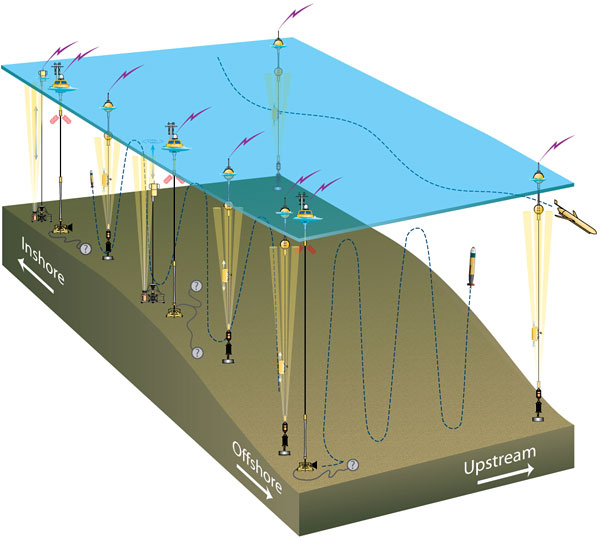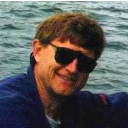Featured Stories | September 27, 2012
Building the Cyberinfrastructure of the Pioneer Array
Some 70 miles south of Martha’s Vineyard, in the midst of one of the most productive and economically important parts of the Atlantic coast, an unprecedented collection of oceanographic observing systems is being installed. This is the Pioneer Array. This community-oriented system has been made possible by contributions from MIT’s Henrik Schmidt and Pierre Lermusiaux amd their colleagues at MIT and WHOI.
Schmidt, director of The Laboratory for Autonomous Marine Sensing Systems (LAMSS) is leading MIT’s contributions to the cyberinfrastructure necessary to support the communications between the sensors and models. Lermusiaux, meanwhile, heads up the Multidisciplinary Simulation, Estimation, and Assimilation Systems (MSEAS) group, which works closely with LAMSS and focuses on the ocean modeling required to synthesize and interpolate the data.

The technical challenges of setting up a marine observatory like the Pioneer Array are many. How do you create sensing tools that can withstand the corrosive environment of the ocean and effectively sample a marine area larger than Connecticut? Even with these tools, how do you coordinate their efforts? How do you make the autonomous underwater vehicles (AUVs) that are a key component of the Pioneer Array truly autonomous? Finally, how do you wrangle data from dozens of different instruments, measuring everything from salinity to surface temperature to biochemical signals and construct a cohesive picture? Such a picture could provide a framework for detailed quantitative studies of and predictions for the ocean dynamics in the region around the Pioneer Array.
Schmidt’s group has made great progress in using sound as a method of sensing and communication in the ocean, and in developing AUVs which share same mission-specific control systems. Typically AUVs would be built by third-party manufacturers with generic control systems hard-wired into the machine, making integration between the sensing hardware and the control system impossible. Schmidt’s group has helped set a new paradigm of “payload autonomy” in the Pioneer Array project, which ensures that all the components of the array are using the same integrated control system.
With support from the Office of Naval Research under the Science of Autonomy Program, Lermusiaux’s group has developed a mathematical procedure to coordinate the movements of AUVs in the extremely dynamic coastal environment. “Because ocean environments are so complex,” said Lermusiaux, “what was missing was the integration of ocean prediction, ocean estimation, control and optimization” for automatically guiding AUV’s through a constantly changing environment. Lermusiaux is also part of the Multi-scale Ocean Modeling Pilot Project in Support of the Pioneer Array (MOPE), which seeks to provide the modeling infrastructure necessary to make sense of the staggering amount of data to be collected by the Pioneer Array.
Both Schmidt and Lermusiaux presented their work at the “Oceanography of the Continental Shelf and Slope: Pioneer Array Science Workshop” held at the University of Massachusetts Dartmouth earlier this summer.
The Array is part of the National Science Foundation’s Ocean Observatories Initiative (OOI). It’s a community-oriented observatory that will offer unprecedented data collection in one least-understood areas of the coastal Atlantic. It’s situated over the shelf break—the region where the continental shelf drops off and shallow coastal waters meet deep ocean waters. This is also where 334 total commercial vessels make their living. “It is very clear,” said Glen Gawarkiewicz, a senior scientist at Woods Hole Oceanographic Institution, “that [this area] is tremendously important … a lot of what we’re looking at has direct economic consequences for the area.”
As the Pioneer Array project moves forward, the work of engineers and modelers like Schmidt and Lermusiaux will be invaluable. AUV gliders are scheduled to be installed and generating data by the end of this year, with the Pioneer Arrray fully operational in 2015. —Kenrick Vezina



 The Laboratory for Autonomous Marine Sensing Systems
The Laboratory for Autonomous Marine Sensing Systems


